MCR 703 MultiDrive and MCR 703 Space MultiDrive are the most adaptable advanced rheometers available on the market. In addition to the standard features of the MCR 503, these rheometers can be equipped with an optional lower drive unit.
This allows users to perform rheological tests with two torque transducers and drive units simultaneously, expanding research possibilities.
There are no restrictions on test modes, measuring systems, accessories, temperature devices, or measurement precision. MCR 703 Space MultiDrive offers maximum working space, allowing for the use of accessories and additional instruments.
MCR 703 MultiDrive
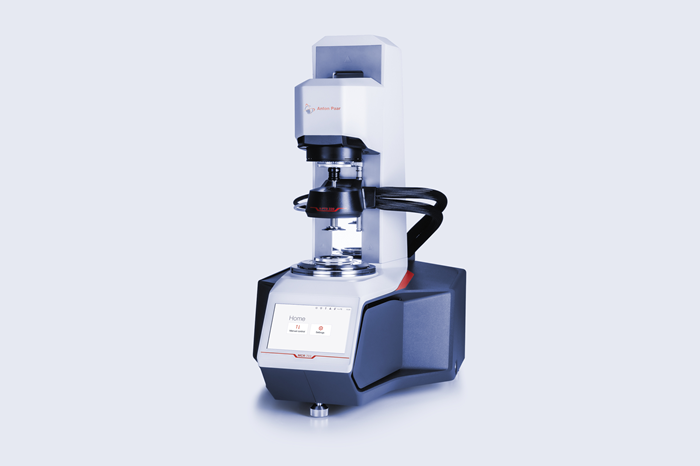
Image Credit: Anton Paar GmbH
- DMA in torsion, tension, bending, and compression
- 200+ accessories for unlimited possibilities in research and development
- Advanced rheometer with an unparalleled range of working modes
- Maximum accuracy for sophisticated research
- Expansion of material characterization using the counter-movement mode
MCR 703 Space MultiDrive
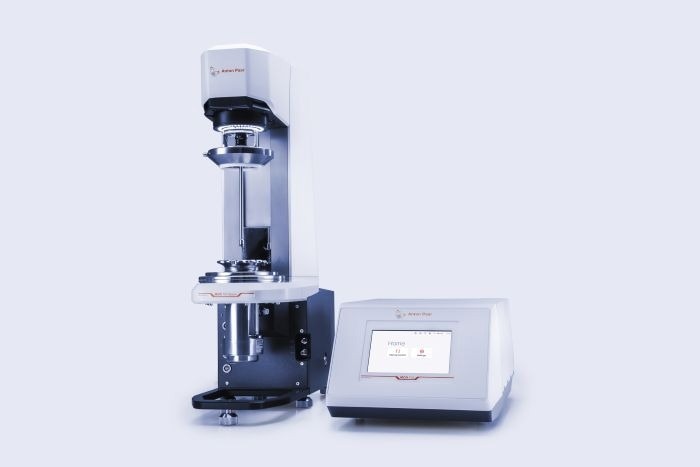
Image Credit: Anton Paar GmbH
- Maximum working area for combinations with optical or mechanical equipment
- Ideal for working in a glovebox, even in an inert gas environment
- The modular rheometer system allows for unprecedented material characterization
- Open instrument design allows for easy installation of 200+ accessories
Key Features
One Rheometer, All Rheological Working Modes
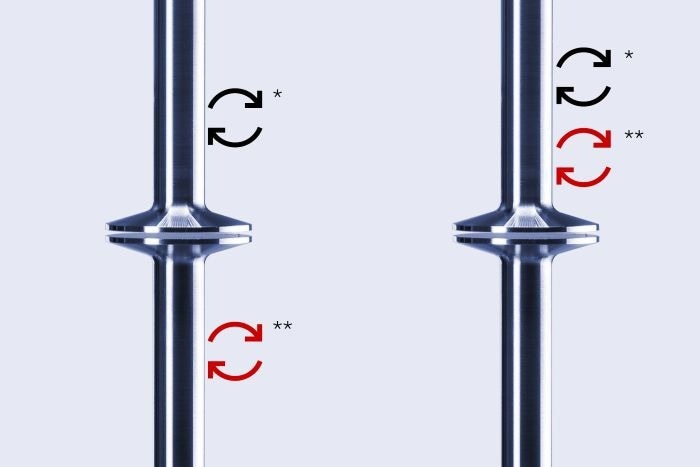
Image Credit: Anton Paar GmbH
This rheometer is best-suited for applications requiring high measurement precision. A combination of two drive units allows users to take rheological measurements in both Combined Motor Transducer (CMT) and Separate Motor Transducer (SMT) modes. Using a single air-bearing-supported EC motor in CMT mode, users can leverage the motor's real-time position control (TruStrain) and conduct 'traditional' stress-controlled testing.
To achieve the best results, in SMT mode, one motor is used solely as a torque transducer, while the other serves as the driving unit. This makes the advanced rheometer suitable for transient regimes such as stress relaxation, start-up shear measurements, and oscillatory testing across a broad frequency range.
* Measuring
** Driving
Push the Limits of Material Characterization
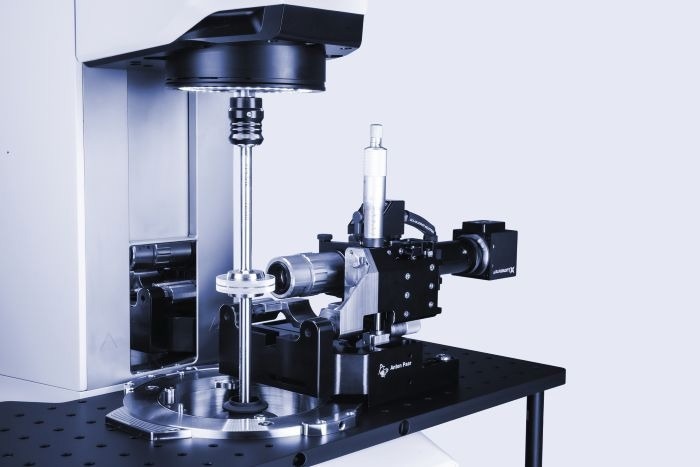
Image Credit: Anton Paar GmbH
In counter-movement mode, the advanced rheometer uses both air-bearing-supported EC motors as drive units and torque transducers that move in opposing directions. Create, for example, a fixed stagnation plane in a sample while observing with a microscope to conduct advanced structural analysis during measurements.
When combined with the universal extensional fixture, this mode allows for extensional testing down to minimal measurable torques and up to unattainable elongations with Hencky strains greater than eight.
With these characteristics, this sophisticated rheometer provides a more thorough understanding of strain hardening. The counter-movement mode simply doubles the speed score, with a maximum speed differential of 6,000 rpm.
DMA in Torsion, Tension, Bending, Compression, and More
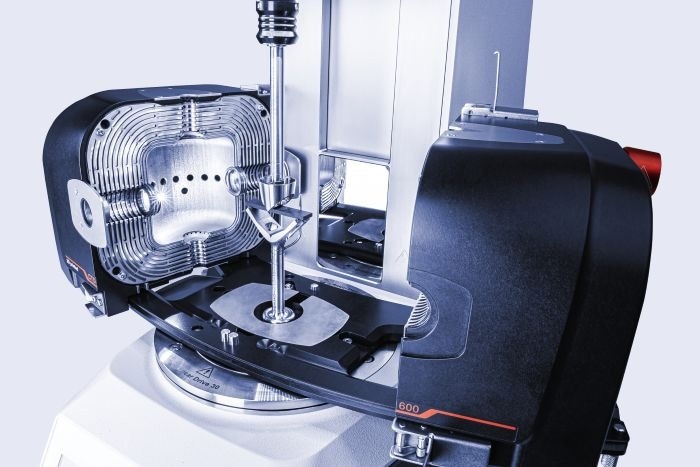
Image Credit: Anton Paar GmbH
MCR 703 is more than a rotating rheometer; it is a multifunctional advanced rheometer that can also do dynamic mechanical analysis (DMA). It conducts DMA in bending or compression by substituting the lower rotating drive with a linear drive and employing geometries such as three-point-bending, cantilever, or parallel plates.
Furthermore, when combined with geometries for films, fibers, and rectangular and cylindrical samples, the linear drive can execute DMA in tension, whilst the top rotating drive is employed for DMA in torsion. This also enables axial-torsional DMA on a single specimen within a single test specification, as well as the measurement of Poisson's ratio and the rapid, direction-dependent characterization of anisotropic materials.
Previously Unthinkable Applications
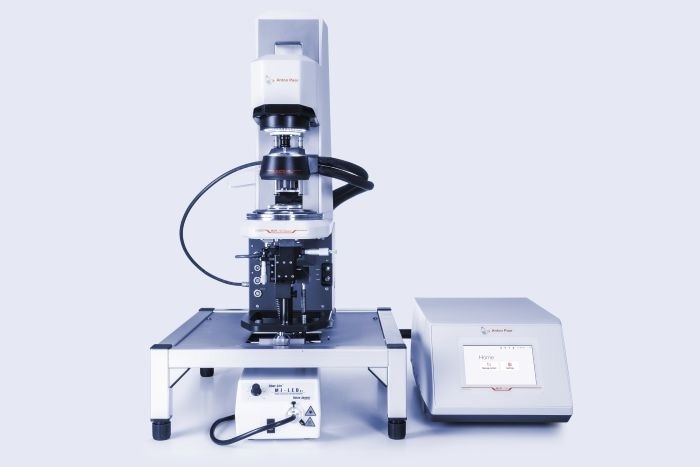
Image Credit: Anton Paar GmbH
MCR 703 Space MultiDrive enhances the remarkable performance of the flagship rheometer, MCR 703 MultiDrive. It is designed to provide unparalleled modularity, flexibility, independence, and functionality for all types of rheology and combination approaches.
The open instrument design increases working space, allowing users to connect the MCR 703 Space MultiDrive to multiple additional external setups for enhanced material characterization (e.g., confocal microscopy and rheology simultaneously). Furthermore, the rheometer's separate electronics box now allows it to be set up in tight spaces or in a laboratory glovebox, even when employing an inert gas (nitrogen, argon) environment (e.g., for high-temperature measurements of materials with a particular hazard level).
More Than 200 Accessories
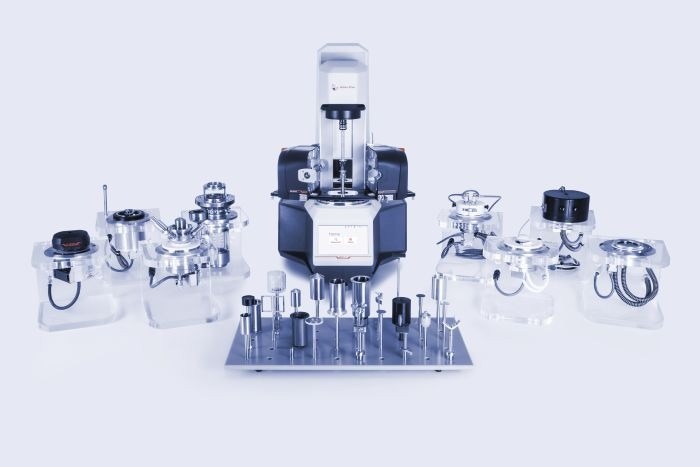
Image Credit: Anton Paar GmbH
MCR 703 MultiDrive and MCR 703 Space MultiDrive can be used with any Anton Paar MCR measurement system, temperature instrument, and/or application-specific accessory to perform routine and complex rheological investigations. This enables the testing platform to be utilized not just for rheology and DMA, but also as a powder rheometer, tribometer, and universal tester.
The Toolmaster function detects and configures all linked devices and measurement systems. Furthermore, the QuickConnect feature enables one-handed connection of the measurement systems. Due to this versatility, the sophisticated rheometers are easily adaptable and simple to configure to meet specific requirements.
Specifications
Source: Anton Paar GmbH
|
MCR 703 Multidrive MCR 703 Space Multidrive |
|
Configuration with 1 EC motor |
Configuration with 2 EC motors |
| Bearing design |
Air, fine-pored carbon |
| Motor design |
Electronically commutated (EC) permanent magnet synchronous motor |
| Displacement transducer |
High-resolution optical encoder |
| Normal force measurement design |
360 ° capacitive sensor, non-contacting, fully integrated in bearing |
| Working modes |
CMT |
CMT, SMT, Counter-Movement1 |
| Min. torque (rotation) |
1 nNm |
1 nNm |
| Min. torque (oscillation) |
0.2 nNm |
0.2 nNm |
| Max. torque |
230 mNm |
230 mNm |
| Torque resolution |
0.05 nNm |
0.05 nNm |
| Angular deflection resolution |
< 1 nrad |
| Min. angular velocity2 |
0 rad/s |
Max. angular velocity /
max. speed |
314 rad/s
3,000 rpm |
628 rad/s
6,000 rpm |
| Min. frequency3 |
2 Hz x 10-8 Hz |
| Max. frequency |
200 Hz |
| Normal force range |
0.001 N to 50 N |
| TruStrain |
✓ |
✓ |
| Ready for DMA in tension, bending, and compression |
✓ |
✓ |
| Ready for axial-torsional DMA4 |
✓ |
✓ |
| Active thermal management of motor |
✓ |
✓ |
| With exposed support plate5 |
✓ |
✓ |
| Dimensions (W x H x D) |
MCR 703 MultiDrive: 453 mm x 775 mm x 673 mm
MCR 703 Space MultiDrive: 300 mm x 775 mm x 584 mm
Electronic box: 333 mm x 231 mm x 576 mm |
| Weight |
MCR 703 MultiDrive: 50 kg
MCR 703 Space MultiDrive: 52 kg
Electronic box: 16 kg |
MCR 703 MultiDrive: 60 kg
MCR 703 Space MultiDrive: 62 kg
Electronic box: 16 kg |
Trademarks: RheoCompass (917 7015), MultiDrive (16731581), TwinDrive Rheometry (7081128), SmartPave (16731556), T-Ready (9176983), Toolmaster (3623873), TruRate (9176967), TruRay (15273915), TruStrain (9176918)
Patents: US Pat. 8453496, 9766172, 9574983, 10908058, 8132445, 10031057, 9702809, AT Pat. 513661, DE Pat. 102015100714
✓ included | o optional | x not included
1 US Pat. 8453496
2 In controlled shear stress (CSS) mode. In controlled shear rate (CSR) mode depending on the measuring point duration and sampling rate.
3 Theoretical value (duration per cycle = 2 years).
4 US Pat. 9574983 and US Pat. 10908058.
5 MCR 703 Space MultiDrive: Unique maximized workspace below the rheometer support plate and on both sides of the instrument